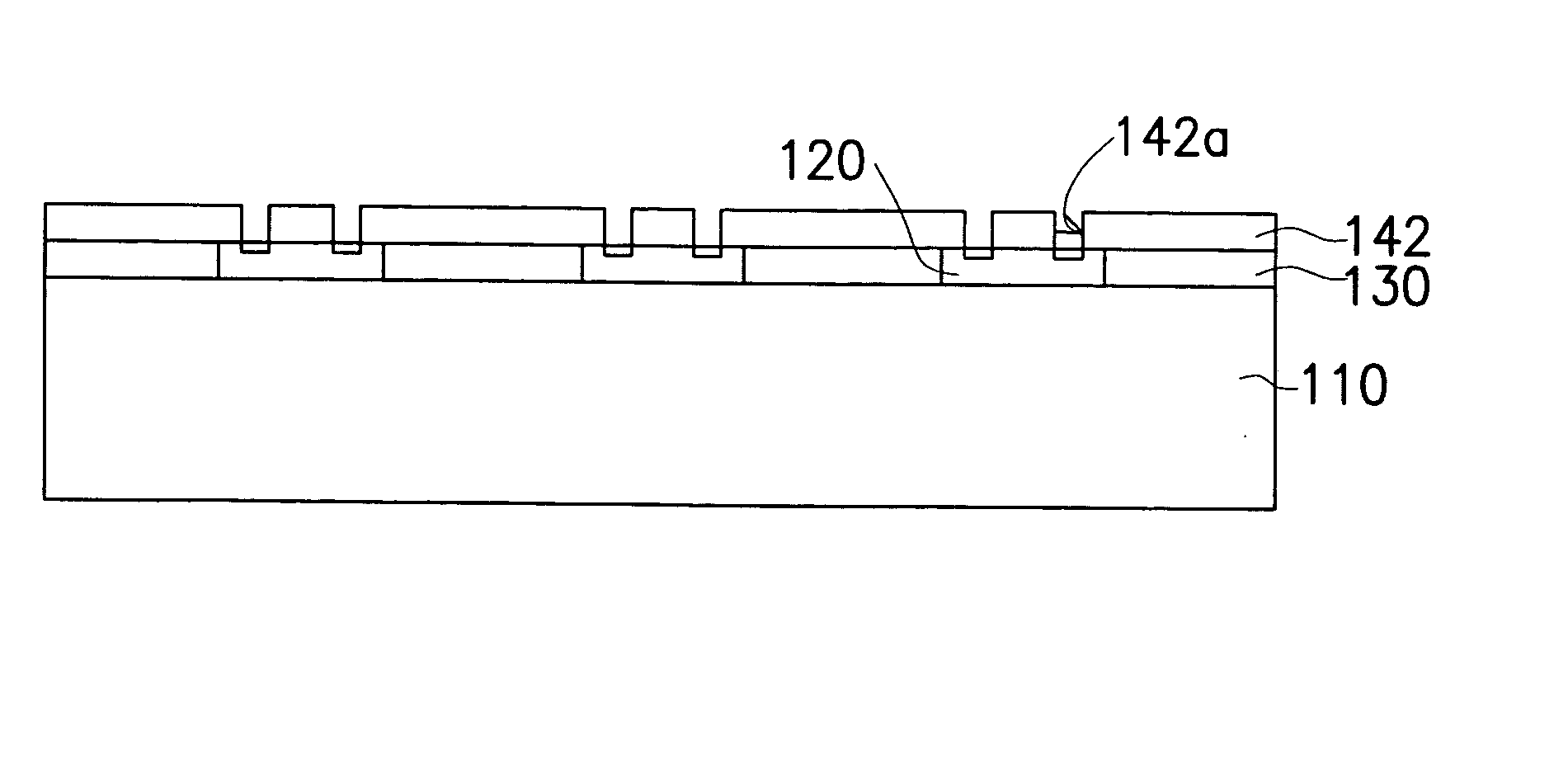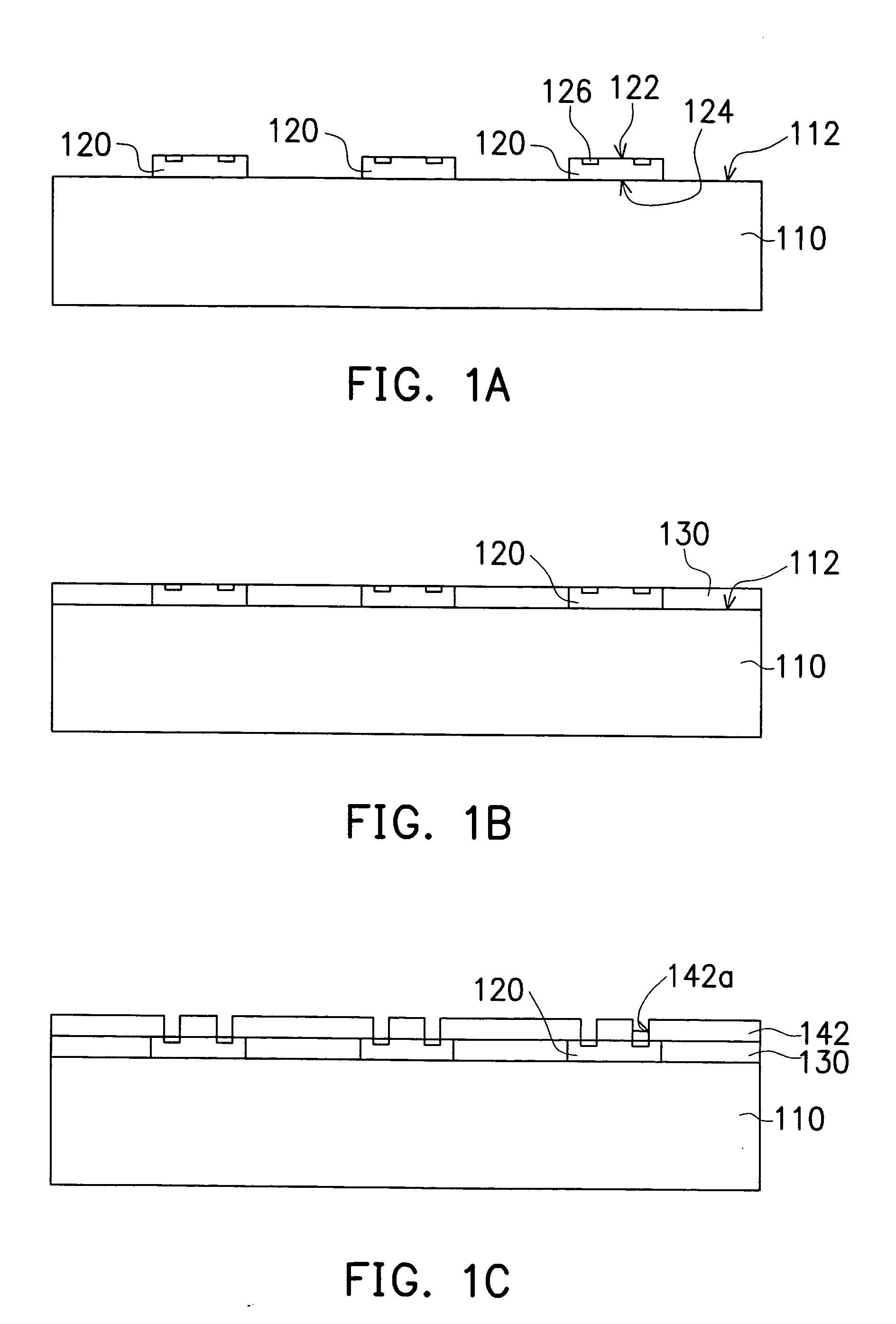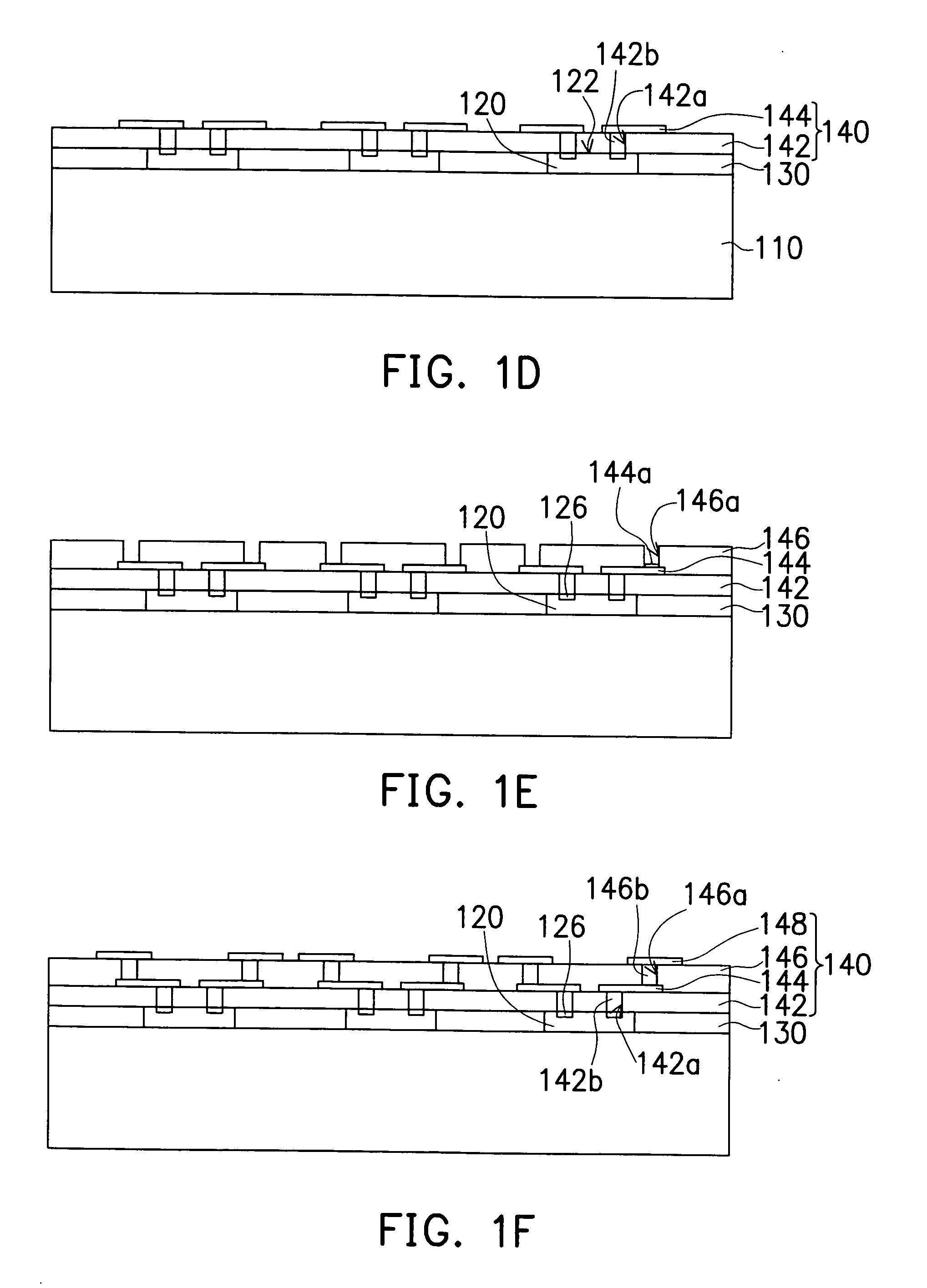Integrated chip package structure using metal substrate and method of manufacturing the same
a technology of integrated chips and metal substrates, which is applied in the direction of electrical equipment, semiconductor devices, semiconductor/solid-state device details, etc., can solve the problems of increasing reducing the distance of the signal transmission path, and increasing the delay and attenuation of the signal
- Summary
- Abstract
- Description
- Claims
- Application Information
AI Technical Summary
Problems solved by technology
Method used
Image
Examples
first embodiment
[0040] According to the above, the present invention is a chip package structure with a metal substrate and a plurality dies on it. The external circuitry of the thin-film circuit layer allows the metal pads of the die to fan out. By forming bonding pads corresponding to the metal pads of the dies such as solders balls, bumps, or pins as the signal input terminals, the distance of the signal path is effectively decreased. As a result, signal delay and attenuation is reduced to increase performance of the die.
[0041] Furthermore, the dies are directly touching the metal substrate, which helps the chips dissipate the high heat generated during operation because of the high heat conductivity of metal. Performance of the chip will thereby be increased. Moreover the fabrication technique on metal substrate is already well known in the art and the cost of metal is low, the present invention can effectively lower the cost of chip packaging and also increase performance of the chip by provid...
second embodiment
[0045] the present invention is a metal substrate with a plurality of inwardly protruded areas for inlaying dies by adhering the backside of the dies to the bottom of the inwardly protruded areas and exposing the active surface of the dies. A thin-film circuit layer is formed on top of the dies and the metal substrate to fan out the metal pads of the dies by using the external circuitry of the thin-film circuit layer. Due to the inlay of the dies in the metal substrate, thinning of the thickness of the chip package structure is effectively achieved and the surface of the metal substrate provides enough planarity and support for the formation of the thin-film circuit layer.
[0046] The third embodiment of the present invention differs from the second embodiment of the present invention by using an alloy metal substrate. FIG. 3A to 3C are schematic diagrams of the sectional view of the third embodiment illustrating the fabrication of the structure.
[0047] Please refer to FIG. 3A, a meta...
fourth embodiment
[0062] the present invention is a metal substrate with the active surface of the dies directly adhered to the insulating layer of the first metal substrate. A filling layer is formed over the dies and the metal substrate followed by a planarization and thinning process. Afterwards, a second metal substrate is adhered to the die and the filling layer. A plurality of thru-holes filled with conductive material are formed on the insulating layer. Finally, a patterned wiring layer is formed on the insulating layer allowing the external circuitry of the thin-film circuit layer to extend to a region outside the active surface of the die to help fan out the metal pads of the die.
[0063] The advantage of this structure is increased surface stability and accuracy because the active surface of the dies are first adhered to the surface of the first metal substrate. The thickness of the die can be very small for reducing the overall thickness of the chip package because no machines handling of di...
PUM
 Login to View More
Login to View More Abstract
Description
Claims
Application Information
 Login to View More
Login to View More - R&D
- Intellectual Property
- Life Sciences
- Materials
- Tech Scout
- Unparalleled Data Quality
- Higher Quality Content
- 60% Fewer Hallucinations
Browse by: Latest US Patents, China's latest patents, Technical Efficacy Thesaurus, Application Domain, Technology Topic, Popular Technical Reports.
© 2025 PatSnap. All rights reserved.Legal|Privacy policy|Modern Slavery Act Transparency Statement|Sitemap|About US| Contact US: help@patsnap.com



